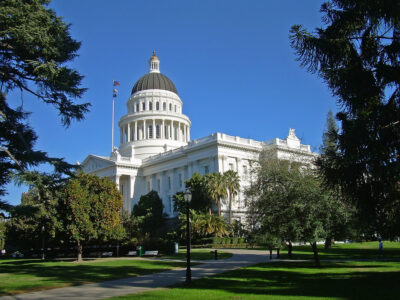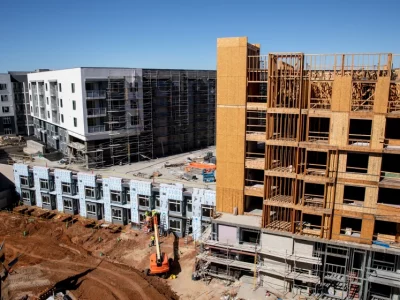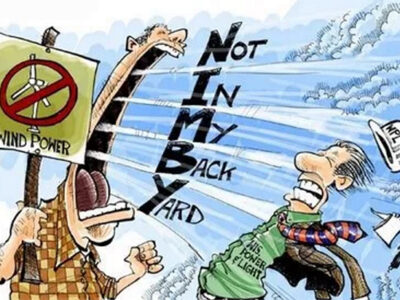Land Use
Calling Captain Renault
We are shocked – SHOCKED – that building more housing causes rents to fall
Well, how shocking. Not: “While much of the country is being crushed by a housing affordability crisis, living in Austin, Texas, is becoming cheaper as rent prices in the city are dropping faster than anywhere else in the nation.” And why, pray tell? “Over the past few years, Austin built more new apartments than any …
Continue reading “Calling Captain Renault”
CONTINUE READINGThe CEQA Poison Pill In SB 607
Weakening the statewide standard of review benefits polluting facilities
For California to meet its climate goals and bring down prices on basic needs like housing, transportation and energy, it will need to dramatically increase infill housing, transit and clean energy facilities, among other projects. Part of achieving that goal involves reforming how environmental review under the California Environmental Quality Act (CEQA) can counter-productively slow …
Continue reading “The CEQA Poison Pill In SB 607”
CONTINUE READINGTrump’s War on Cities
The Administration is devoted to destroying urban life: that puts it with many of history’s worst regimes
I just finished up Ian Buruma’s and Avishai Margalit’s excellent book, Occidentalism: The West in the Eyes of Its Enemies, and it struck me that we need to think of Donald Trump’s despoilation of the environment in a broader perspective: his administration seeks to fundamentally change both the natural and the human environment. Trump clearly …
Continue reading “Trump’s War on Cities”
CONTINUE READINGThe $133 Million Bat Tunnel
Here’s what permitting reform in the United Kingdom can teach the United States about building and abundance.
“We’ll rip out ‘insane’ environmental rules that block growth.” “We can’t get anything built anymore. Everything takes too long.” “We will streamline environmental obligations. We will limit the cynical legal challenges that block major infrastructure projects. We will strip away the years of consultation that drown builders.” You might well expect these threats and worries …
Continue reading “The $133 Million Bat Tunnel”
CONTINUE READINGHousing Abundance Meets California’s Political Realities
A Senate Housing Committee debate last week was a sobering indication.
There’s a lot of talk in certain policy circles these days about abundance, as a strategy to improve people’s lives and lower the cost of living through better governance. Nowhere is “abundance” needed more than in California, where housing costs due to a dire long-term shortage of homes has made the state one of the …
Continue reading “Housing Abundance Meets California’s Political Realities”
CONTINUE READINGAnother CEQA urban residential exemption bill
AB 609 provides a different and promising approach for advancing urban infill, but it could use a map
Following up on my recent post about SB 607, which proposes creating a California Environmental Quality Act (CEQA) exemption for urban infill housing, a similar bill, AB 609, has also been introduced this session. Like SB 607, AB 609 exempts from CEQA housing projects in urban areas. The main difference with respect to the infill …
Continue reading “Another CEQA urban residential exemption bill”
CONTINUE READINGThe NIMBY Presidency
Peter Navarro hates foreign trade. He also hates housing.
Well what a surprise. Not: Before Peter Navarro designed trade wars for President Trump, he orchestrated housing wars in San Diego across five unsuccessful bids for local office. Navarro, then a UC Irvine economics professor, led San Diego’s slow-growth movement in the 1990s, drawing battle lines that still define today’s development fights. His zero-sum view on homebuilding then …
Continue reading “The NIMBY Presidency”
CONTINUE READINGThe Death of CEQA?
Not quite, but Assemblymember Wicks’ new bill would severely limit CEQA for housing.
“Legislative bombthrower” is one of those cliched – and thus overused – metaphors. And California State Assemblymember Buffy Wicks (D-Richmond) has no reputation as one. But with her latest effort, AB 609, it seems like she is enjoying her Molotov cocktail shaken, not stirred. Wicks’ bill – now cosponsored with several other Assemblymembers – is …
Continue reading “The Death of CEQA?”
CONTINUE READINGCEQA and infill development
SB 607 is an excellent beginning for reforming CEQA to facilitate residential infill development
The state legislature continues its efforts to facilitate more housing production in California. Among the most significant bills being considered this session in Sacramento is SB 607, which would provide some substantial changes to how environmental review under the California Environmental Quality Act (CEQA) would operate. Overall, this is a bill that would provide important …
Continue reading “CEQA and infill development”
CONTINUE READINGLeft-Wing NIMBYism Strikes Out – Again
The Current Overheated Housing Market in Los Angeles Demonstrates That Market-Rate Housing Can Reduce Rents
One of the most pernicious aspects of the land use and housing debate over the last few years has been the rise of what we mean might call “left-wing NIMBYs.” It is essentially traditional NIMBYism but on allegedly progressive grounds. The principal argument of this group is that building more market-rate units will do nothing …
Continue reading “Left-Wing NIMBYism Strikes Out – Again”
CONTINUE READING











